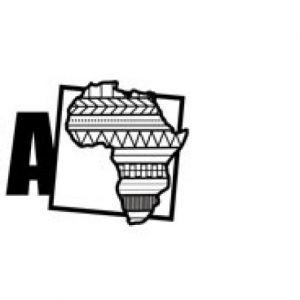Cape Town: Day Zero is being progressively pushed back, but it is still a very real and present threat.
All residents must keep within the 50 litre per day limit, which was the main message in my newsletter last week. Thanks to a decline in agricultural usage, Day Zero has been pushed back to 11 May this week, from 16 April last week. And we can push this back still further in the coming weeks, through a combination of using less water and producing more water. This has to be a team effort. We’ll only defeat Day Zero if we all pull together.
Using less water
Daily usage by the City of Cape Town is steadily coming down but at 547 million litres used per day, it is still far above our target of 450 million litres per day. The city is reducing demand in two main ways.
First, by implementing a stricter water restriction and tariff structure, which came into effect on 1 February restricting usage to 50 litres or less per person per day. The City is continuing with the mass roll out of water management devices at high consumption households. Over 30 thousand of these have been installed since 1 October 2017.
And second, by reducing water pressure (“throttling”). It is not possible to water shed a specific area, like you would load shed electricity. The pipe system is a complex one, making it difficult to isolate specific areas. And letting the pipes run dry risks bursting them once water is returned to them. Even pressure reduction is a complex process. But the throttling will continue to intensify, meaning households will experience a noticeable drop in pressure and those in high-lying areas and in apartment blocks may be without water altogether for a period of no longer than 12 hours at a time.
Nonetheless, an accelerated programme of pressure reduction valve installations has been in effect since last month, which allows the City’s engineers greater control over pressure. Not only does pressure management lower consumption by reducing the rate at which water flows to properties, it also reduces loss from leaks and pipe bursts.
In responding to droughts, demand management through restrictions and pressure reduction is recognized as international best practice. There was simply no way the City could have predicted the severity of this drought and been able to sustain ordinary supply levels to residents three years into the worst drought in history. While expecting residents to do everything possible to use less water, it is also entirely fair that residents expect the City to do everything possible to produce more water.
Producing more water
For the next 60 days, an additional 67 million litres a day will be added to the system, transferred from the Palmiet-Kogelberg dam, which has had plentiful rainfall and is full. This has been a collaborative effort between the City and the farming community of the Elgin-Grabouw valley, to whom we are extraordinarily grateful.
Groundwater extraction from the Atlantis Aquifer has been supplying about 12 million litres per day for the past week, and we expect this to increase to around 30 million litres per day over the period 2018 to 2020 once the project is complete. Likewise, boreholes being drilled into the Cape Flats Aquifer should start adding a further 80 million litres per day and those into the Table Mountain Aquifer roughly 40 million litres per day from June, over the period 2018 to 2020.
The City recognizes that groundwater extraction must be approached with great sensitivity, as aquifer water is a finite resource. The City intends to allow the natural recharge of aquifers in the medium term and ensure that any long term extraction is conducted sustainably.
Three temporary desalination plants are coming online soon. The Strandfontein plant is expected to produce a total of 7 million litres per day once it is fully up and running, with 2 million litres per day from March and the additional 5 million litres per day coming online in May. The V&A Waterfront plant is expected to start producing an additional 2 million litres from March. And the plant at Monwabisi is expected to provide 2 million litres per day from April and will be providing 7 million litres per day by May, once it is at full capacity.
Legal responsibilities
These projects appear to imply that it is the City’s legal responsibility to provide bulk water. It is not. Almost everything the City and Western Cape Province are currently doing to augment water supplies is technically outside their legal mandate. The budget and responsibility for bulk water supply and storage resides 100% with the national Department of Water and Sanitation (DWS). Section 3 of the National Water Act states:
(1) As the public trustee of the nation’s water resources, the National Government, acting through the Minister, must ensure that water is protected, used, developed, conserved, managed and controlled in a sustainable and equitable manner, for the benefit of all persons, and in accordance with its constitutional mandate.
(2) Without limiting sub-section (1), the Minister is ultimately responsible to ensure that water is allocated equitably and used beneficially in the public interest, while promoting environmental values.
(3) The National Government, acting through the Minister, as the power to regulate the use, flow and control of all water in the Republic.
DWS’s infrastructural budget for the year 2017/18 was R12.2 billion. The DWS has only spent R5 million of this in the Western Cape over the past 3 financial years - on clearing a build-up of silt in the Voelvlei Dam Catchment Area, a project they failed to complete. (The Western Cape government, using budget that was not technically available for that purpose, completed the work of cleaning the water canals.)
Local municipalities are responsible for delivering water from dams to households, with as little wastage as possible. This year, the City of Cape Town has further reduced the volume of water lost to leaks, theft and faulty meters. Our average loss rate is 16% against a national average of 36%.
It is vitally important that South Africans understand the legal distribution of responsibilities, because most of the country faces water shortages in the very near future. Water is already running out in parts of Eastern Cape, KZN, Free State and Limpopo. Lesotho’s dams, which feed parts of the interior, are very low. Many smaller towns have experienced periods of dry taps in the recent past. Last week, the DWS confessed that the taps may run dry across the country within the next few years. Many more cities will soon be staring down the barrel of a Day Zero gun.
We cannot lurch from one local water crisis to the next blaming local and provincial governments each time. And it is reckless for anyone to drive the false narrative that they are responsible. Blaming local and provincial authorities for water shortages in 2018 is like blaming them for load shedding in 2008. It’s simply irrational. But worse than that, it lets National Government off the hook at a time when we need to be holding them accountable like never before.
If anything good has come out of the Cape drought crisis, it is the loud and clear message that water is the lifeblood of our economy and society. With the realities of rapid population growth, urban migration and climate disruption, we must put water planning and management centre stage. And we must all start treating it as the precious resource it is. Thank you to all those Day Zero heroes who are already doing so!






